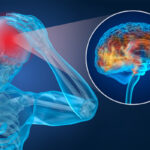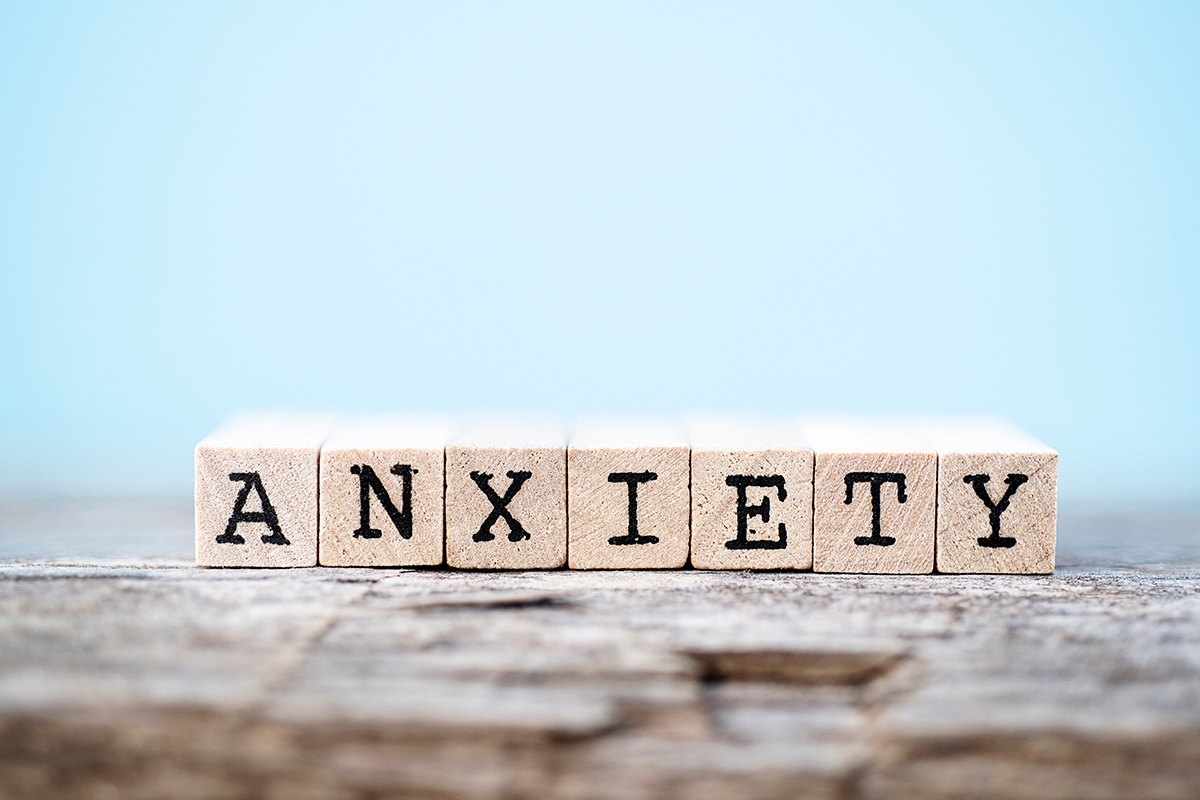Is it Anxiety, a Phobia or just Life in Twenty-first Century?
According to the National Institute of Mental Health (NIMH) Generalized Anxiety Disorder (GAD) is one of the most prevalent mental health issues in the United States. It affects over 18% of the adult population with 22% suffering from a severe form. Anxiety Disorder often starts in childhood, with 11 years old being the average age of its onset. The symptoms differ from individual to individual, but they include a host of physical maladies from migraine headaches and nausea to thumping hearts and twitching muscles. 1
Perhaps one of the reasons so many people in our society are suffering from anxiety today is because we are a nation and a society going through a number of profound changes. Technology is transforming the way we do almost every activity in our lives – the way we communicate, access information, bank, shop and even amuse ourselves. Even the climate is changing, affecting the very planet we live on. These changes can all be stressors whatever your level of education or self-confidence. No wonder we’re anxious!
But 21st century angst isn’t the same as an Anxiety Disorder.
People who suffer from Anxiety Disorder may experience a sense of danger that is completely unwarranted by the actual situation. Furthermore, the feeling can last so long and be so intense, normal life becomes impossible. Anxiety Disorders come in several forms including phobias where a feeling of overwhelming anxiety is set off by a particular thing such as spiders or snakes and situations such as flying or having blood drawn. Like GAD, panic attacks, social anxiety, Obsessive-Compulsive Disorders (OCD) and Post Traumatic Stress Disorder (PTSD) are all forms of Anxiety Disorder. 2
Here’s a short list of situations common among those suffering from Anxiety Disorder 3
- A constant sense of tension, worry and edginess.
- Anxiety so severe it interferes with work, school, or family responsibilities.
- Feeling fear that you know is irrational, but still can’t seem to overcome.
- A belief that something bad will happen if certain things aren’t done a certain way.
- A need to avoid everyday situations or activities because they provoke overwhelming anxiety.
- Sudden, unexpected attacks of heart-pounding panic.
- A feeling that danger and catastrophe are around every corner.
What causes anxiety?
We’re still discovering just why all of us experience the symptoms of anxiety from time to time and others are more adversely affected. We do know that the emotion of fear is part of our hardwiring and produces instinctive behavior that helps ensure our physical survival. No one knows if a tendency to suffer from anxiety is inherited or whether our upbringing is the primary factor. However, according to Daniel Pine MD, Director of the research program on mood and anxiety disorders of children and adolescents at the National Institute of Mental Health in Bethesda, Md, “We’re beginning to understand how all of these things go together. We know that it’s rarely one thing that gives rise to a mental disorder, and we know that different mental disorders have different mixes of genetic and environmental influences.” 4
Genetics plays a role
While we still don’t fully understand why two people exposed to the same stressful situation will have very different reactions – one that would be described as normal and the other as an example of Anxiety Disorder – we do know genetics plays a part. Certain forms of anxiety such as panic disorder, GAD and OCD seem to run in families, indicating there’s a genetic link. Neurotransmitters or the chemical messengers that transmit information from one part of our brain to another may also influence why some people develop anxiety and some don’t.4
Early research indicates that the Amygdalae does, too.
The Amygdalae are two almond-shaped organs located in the middle of each side of our brain and that of other animals. We know that they are involved with instructing the body to take action in the presence of a perceived danger.5
In the 1930s, researchers conducted a series of animal experiments to discover the function of the amygdala. When they removed or damaged this part of the limbic system in rats and monkeys, they found that these animals no longer seem to be afraid of snakes and other threats that would have normally terrified them. 5 Some humans seem to have the same type of response. An article in the New York Times reported that Justin Feinstein, a clinical neuropsychologist at the University of Iowa, discovered that a patient with a compromised amygdala experienced a similar lack of fear.6 This case, and others like it, have led some to speculate that it is the Amygdala that produces fear – warranted and unwarranted – in the brain.
How is Anxiety Disorder different from normal anxiety?
Dr. Pine explains the difference between normal anxiety and GAD, this way. “Let’s think about the person who is extremely shy in social situations. They may go to work or go to a party or order in a restaurant or talk to the librarian. But they will be absolutely miserable while doing it. They will have a great number of physiological symptoms — rapid heartbeat, sweating, butterflies in their stomach — and extreme stress in anticipation of doing any of these things. The diagnosis of abnormal anxiety rests on a mental health professional’s judgment that the level of distress experienced by the individual, relative to all other people in that situation, is extreme.” 4
Are there differences in the amygdala of normal people and those with Anxiety Disorder?
In Pine’s research he found that, “when presented with subtle signs of danger, the amygdala of kids with anxiety and kids with depression react similarly to the amygdala of currently healthy kids who are at risk for anxiety and depression.” Thus, even though a high-risk child may not exhibit an Anxiety Disorder, their amygdala still reacts differently to anticipated danger than those of normal children.4
In the past, Pine claims, Anxiety Disorders were seen as a reactivity disorders. “Research seemed to indicate that the brains of people with anxiety were unusually sensitive to danger and tended to overreact. There is some data to support this, but now… we’ve noticed that the biggest differences between anxiety patients and healthy people were not found in their response to extreme, obvious danger but rather in their brains’ reactions to subtle threats or ambiguous situations.”4
This finding has implications for finding the most effective treatment.
When asked about treating cases of Anxiety Disorder, Dr, Pine, said, “This finding suggests that the root problem is one of telling the difference between a potential threat and a real one. And this, in turn, suggests that anxiety results from a learning disorder rather than a reactivity disorder. When we look at anxiety this way, we are led to a host of potential new treatments geared toward correcting a learning deficit. This has treatment implications for both children and adults. The hope is that we will eventually be able to determine which patients will benefit from therapy or from medication and which need a combination of therapy and medication.”4
What we’re doing now.
Currently patients suffering from GAD ma y be prescribed medication with or without therapy to treat the worst symptoms. The type of medication given most often is anti-depressants that seem to decrease anxiety, even for those who are not depressed. Another class of drugs geared specifically for anxiety, are benzodiazepines.7
y be prescribed medication with or without therapy to treat the worst symptoms. The type of medication given most often is anti-depressants that seem to decrease anxiety, even for those who are not depressed. Another class of drugs geared specifically for anxiety, are benzodiazepines.7
Nevertheless, more and more these disorders are treated by a specific form of talk therapy – Cognitive Behavior Therapy. Conducted by a therapist especially certified in this form of treatment, it’s designed to change the patient’s thought patterns in order to modify their behavior. In the case of chronic anxiety, this would be the thoughts leading up to experiencing anxiety in reaction to certain situations. Eventually, the association of fear with these situations is lessened or eliminated completely.7
Neurofeedback can also produce these changes.
Neurofeedback can be used to augment medicinal therapy, talk therapy or on its own as an alternative option to them. Based on the same principals as biofeedback, neurofeedback enables patients to learn how to speed up or slow down their brain function and control their reaction to different stimuli.
Unlike medication, which offers only short-term relief by temporarily changing brain chemistry, Neurofeedback provides a long term, individualized solution that often eliminates bouts of anxiety permanently. Applying biofeedback techniques to analyze brain function, the specialist determines how the patient’s brain works differently from a normal brain. There is no need for long intake discussions to find the source of the patients’ anxiety for effective CBT. Once a therapy plan has been determined, the brain itself is able to learn what changes it must make to eliminate feelings of anxiety. Therefore, the patient can achieve more success in less time and with less work for a longer period of time.
If you or someone you know is experiencing anxiety, call us to learn more about neurofeedback.
You’ll find that it’s a treatment option utilized by people of all ages and circumstances, including the US Armed Forces, school children and professionals in every industry who want to improve their brain function simply, painlessly and, in some cases, permanently. Call us at (847) 656-5080. We’d love to hear from you.
1 Any Anxiety Disorder Among Adults, National Institute of Mental Health, Aug. 8, 2017 https://www.nimh.nih.gov/health/statistics/prevalence/any-anxiety-disorder-among-adults.shtml
2 Frank, C., M.D., What Is the Difference Between Anxiety And Phobia?, ABC News,
April 15, 2008 http://abcnews.go.com/Health/AnxietyOverview/story?id=4659885
3 Melinda Smith, M.A., Lawrence Robinson, and Jeanne Segal, Ph.D. Last updated: July 2017.Anxiety Disorders and Anxiety Attacks, helpguide,org, July, 2017 https://www.helpguide.org/articles/anxiety/anxiety-disorders-and-anxiety-attacks.htm
4 Wielawski, Irene, Evaluating Anxiety from an Early Age, New York Times, 7/11/2008 http://www.nytimes.com/ref/health/healthguide/esn-anxiety-expert.html?pagewanted=all
5 What causes anxiety? Wikipedia, https://en.wikipedia.org/wiki/Amygdala
6 Bhandoo, Sindya, “Humans, Like Animals, Behave Fearlessly Without the Amygdala,” NYT 12. 16, 2010 http://www.nytimes.com/2010/12/21/science/21obbrain.html
7 Frank, Cathy, MD, What are the most common treatments for anxiety disorders?, ABC News, April 15, 2017, http://abcnews.go.com/Health/AnxietyOverview/story?id=4660198







